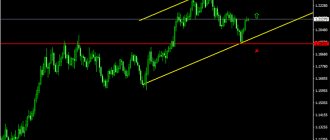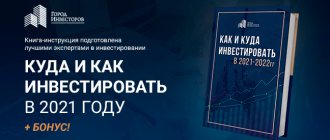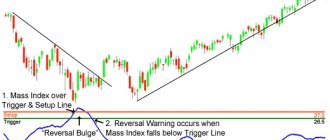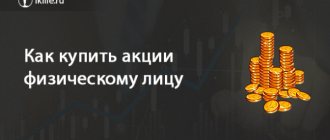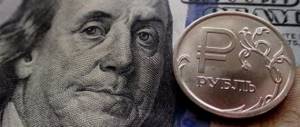By analyzing the index of industrial and agricultural production in Russia based on Rosstat, you can get an accurate picture of how much production is produced in individual industries, how growth or decline occurs in individual categories of products, goods and raw materials. Let's consider long-term forecasts and growth opportunities for basic industries.
How and by whom is the index calculated?
The IPP in Russia is calculated by Rosstat, the methodology is fixed by order No. 301 of May 8, 2014.
To calculate the index, a model is used that is preferred in European countries, as well as the United States. It's called the Laspeyres index.
Formula for calculating the indicator
Calculations are carried out in several stages, at each of them three series of indicators are calculated:
- In simple terms, the increase in volumes in the current month or period since the beginning of the year is calculated here (the generally accepted designation is t), relative to the average monthly volumes of the base year:
The base period is considered to be the period when prices, composition and quantity of goods produced were more or less stable, and no significant fluctuations were expected in the next few years.
Thus, 2008 was used as the base for 2010-2013, and from 2014 they began to use 2010.
The determination of the index of industrial production volumes is characterized by a decrease in accuracy over time, as the structure of prices and industries as a whole changes. Therefore, in the world, as a rule, the base is revised approximately every 5 years. More often, a year is chosen that ends in zero or five.
Example: January-August 2021 to January-August 2010
- Then the change in industrial production in the previous month, the corresponding month of last year or the corresponding period since the beginning of last year is calculated - t-1 compared with the average monthly production of the base year -
Example: July 2021 to July 2010
- Indices of changes in production in the reporting month or period since the beginning of the year t compared with the past period t-1, which are obtained by dividing the indices calculated in paragraphs 1 and 2.
Example: August 2021 to July 2018
Thus, we can get 3 indicators for each category of manufacturers.
Calculation using a simple example
The theory is good, but to understand the logic, let's try to calculate the indicator using an example.
As we have already said, our index consists of 4 categories, each of which has its own weight in the overall total. Let's say that in the base and current periods the results indicated in the table were obtained. We know the volume of industrial production in the base period. We can calculate the index.
| Category | Price in base period | Quantity produced in the current period | Volume in the current period | Volume in the base period | Category weight |
| Mining | 100000 | 3 | 300000 | 250000 | 56,18% |
| Manufacturing | 1500 | 40 | 60000 | 48000 | 11,24% |
| Extraction distribution of electricity, gas and steam | 3000 | 18 | 54000 | 50000 | 10,11% |
| Water supply, drainage, waste disposal | 10000 | 12 | 120000 | 120000 | 22,47% |
| Total | 534000 | 468000 | 100% |
As can be seen from the table, first of all, the volume of each category in the current period is calculated (as the product of price and quantity) and after that the weight is determined (by dividing the category volume by the aggregated indicator).
Next, we substitute the obtained values into the main formula (transforming it a little for convenience):
So the index is 115%.
Calculation features
The IPI is calculated as the ratio of the volume of goods produced in the extractive and industrial sectors for the reporting period in monetary terms to the same indicator for the previous period. The formula for calculating the index is as follows:
IPP = Qtek / Qbas x 100%
where Qcurrent and Qbase mean production in the current and base periods, respectively. In Russia, the IPP is calculated based on data from companies with the most powerful production indicators. The obtained result is the basis for determining the current economic situation in the country.
IPP in Russia by year
Industrial production as a percentage of the previous year
| Year | Index |
| 1992 | 84,0 |
| 1993 | 86,3 |
| 1994 | 78,4 |
| 1995 | 95,4 |
| 1996 | 92,4 |
| 1997 | 101,0 |
| 1998 | 95,2 |
| 1999 | 108,9 |
| 2000 | 108,7 |
| 2001 | 102,9 |
| 2002 | 103,1 |
| 2003 | 108,9 |
| 2004 | 108,0 |
| 2005 | 105,1 |
| 2006 | 106,3 |
| 2007 | 106,8 |
| 2008 | 100,6 |
| 2009 | 89,3 |
| 2010 | 107,3 |
| 2011 | 105,0 |
| 2012 | 103,4 |
| 2013 | 100,4 |
| 2014 | 101,7 |
| 2015 | 99,2 |
| 2016 | 102,2 |
| 2017*) | 102,1 |
You can download the data here.
The index is also published every quarter and month. The calculated IPP can be found on the official website of Rosstat.
IPP in other countries
The industrial production indices of the United States and the European Union are called Industrial production index. They are published monthly by the Federal Reserve and Eurostat, respectively.
| Year | Eurozone | USA |
| 2007 | 105.9 | 114 |
| 2008 | 91.7 | 103.6 |
| 2009 | 88 | 100.3 |
| 2010 | 96.4 | 94.9 |
| 2011 | 97.1 | 95.3 |
| 2012 | 94.1 | 98.1 |
| 2013 | 96.4 | 103.2 |
| 2014 | 98 | 106.5 |
| 2015 | 100.7 | 102.9 |
| 2016 | 102.7 | 102.8 |
| 2017 | 108.5 | 105.8 |
| 2018* | 108.1 | 108 |
*As of July 2018
What is the industrial production index
I've been running this blog for over 6 years. All this time, I regularly publish reports on the results of my investments. Now the public investment portfolio is more than 1,000,000 rubles.
Especially for readers, I developed the Lazy Investor Course, in which I showed step by step how to establish order in personal finances and effectively invest your savings in dozens of assets. I recommend that every reader complete at least the first week of training (it's free).
More details
The index of industrial production (IPI) is an indicator of the total dynamics of production in the mining, manufacturing and oil and gas industries, as well as the electric power industry. It is calculated as the ratio of the volume of production for a certain period to the volume of production for a similar previous period of time (month, quarter or year).
Here Ipp is the index of industrial production for the period under review;
Qt is the volume of production in monetary terms during this time;
Qb – production volume for the period preceding the reporting period;
Pb – average unit price during the previous year.
What you need to know about IPP in Russia
The methodology for calculating the IPP described above has been used by Rosstat since 2014. The impact of inflation is not taken into account, which is why the IPI can increase even when the physical volume of output has decreased. Rosstat publishes the indicator for the past month on the 13th working day of the next month. The annual IPP is published on August 15 of the year following the reporting year. Studying the dynamics of economic indicators in Russia is complicated by the frequent change of methods and classifiers.
Thus, from January 1, 2017, a new classifier of types of economic activity OKVED2 came into force. When comparing data on industrial production obtained with different classifiers, large discrepancies were revealed. Growth in the oil and gas and manufacturing industries under OKVED2 turned out to be noticeably higher, and in electricity production, on the contrary, lower than with the old classifier. All this reduces the reliability of the data.
For example, consider the Russian IPP chart from 02/01/2000 to 06/16/2020. The noticeably greater depth of the industrial decline in 2008–2009 compared to 2020 is striking. This is despite the fact that in April–May 2021, a significant part of enterprises were suspended for quarantine, and world prices for oil and gas showed record lows. Changing the classifier of activities is one of the main reasons for incorrect statistics. Russia's raw materials economy in the 2021 reporting looks better than it would have been with the previous version of OKVED.
IPP in the USA and its features
The methodology for calculating IPI (Industrial Production Index) currently accepted in the United States uses 2012 as a base year. This means that when calculating the annual API, current production volumes are compared with 2012 figures, adjusted for inflation. Data are published both with and without seasonal adjustment.
The US Federal Reserve also publishes the monthly IPI (often called Fed Industrial Production), which compares to last year's figure for the same month. Finally, there is the monthly IPI, which compares production in a given month with the previous month. Both indicators are released in the middle of each month. They are presented in the form (IPI–100)%, i.e., not the absolute value of the index is indicated, but its change during the reporting period compared to the previous one.
This graph shows the annual IPI without seasonal adjustment from the beginning of 1970 to May 2021. The volume of industrial production in 2012 is taken as 100%. It can be said that the last two decades were practically wasted for the American real economy: the era of real growth ended in 2000 year.
How does the IPP affect the country's economy, currency quotes and the stock exchange?
As we can see from the table, the industrial index correlates with the general economic condition in the country. During a crisis, it drops sharply, pointing investors, officials and manufacturers themselves to problematic industries. The indicator, unlike, for example, the index of physical volume of industrial production, is also associated with such indicators as:
- Inflation. A sharp increase in the indicator suggests that, most likely, prices for industrial goods have increased. This, in turn, could cause a round of inflation, as manufacturers of consumer goods will also be forced to raise prices due to increased production costs.
- Unemployment rate. If the indicator decreases, industrial enterprises will be forced to reduce production costs by laying off workers.
- Devaluation of the national currency and Forex. An increase in the indicator contributes to the strengthening (increase) of the national currency exchange rate. As for speculation in the Forex market, participants wait every month for the publication of the indicator in order to play on its rise or fall.
Market environment as a criterion for product differentiation
The distinction between indicators may also make sense for the reason that the production of civilian cars is generally carried out with the expectation of their subsequent sale within the free market, often in foreign countries. In turn, military products, as a rule, are produced on a pre-order basis, and therefore they are almost guaranteed to be sold. In this sense, the enterprise will perform an administrative task rather than one that would characterize the company’s activities as a full-fledged subject of commercial legal relations.
Thus, at this stage of calculating the indicator under consideration, it is important to correctly differentiate products by industry, if this, of course, is required based on the characteristics of the structure of the national economy, as well as the specific tasks of researchers.
Share price
I would like to address this topic separately. Since companies representing fundamental industries are mostly listed on the stock exchange and form the basis of the capitalization of the entire Russian market, the industrial production index that they form shows the general state of affairs in the industry. Thus, the growth of the IPP indicates an increase in production, which, in turn, improves financial performance, which can be reflected in the price of shares of companies such as Gazprom, Lukoil, RusHydro, the largest engineering enterprises and other manufacturing giants.
Role
The IPP takes into account the performance of the main sectors of the economy. It is an average of manufacturing industry indices. It is based on physical indicators of output, excluding government services. Using an index plays an important role:
- helps determine the dynamics of socio-economic phenomena in the country;
- makes it possible to analyze the influence of various factors on the overall change in the index;
- makes it possible to analyze the impact of structural changes on the indicator.
Calculating the PPI gives an understanding of what stage of the economic development cycle the state is at.
How to apply this knowledge on exchanges
Experienced speculative investors keep a calendar where all important economic releases are marked, including the IPP - the days and times when it is published. On the day the news is released, they monitor whether the data coincides with expert forecasts - the so-called consensus. If yes, and the indicator increases, the market will go up; if not, it will fall.
However, over long-term investment horizons, analysts use this indicator to predict the future value of shares of a particular issuer in order to determine their growth potential. This is a rather complex and painstaking process, which is carried out by specially trained people in brokerage companies.
To summarize, I can say that the IPP is one of the main guiding indicators for an investor. For example, if we compare the GDP with GDP for similar periods, we can talk about the dynamics of production in fundamental industries compared to other areas. If the index grew faster than GDP, then industry developed faster and vice versa. This could be a good signal to buy fundamental stocks.
If you understand the processes that take place in the country’s economy, then it will be much easier for you to make informed and effective decisions. To do this, you just need to subscribe to this blog and read my educational program on investing. See you soon, friends!
Calculation methods
The following methods are used to determine PPI:
- direct measurement;
- assessment made on the basis of information on energy costs and working hours.
To determine the indicator, it is necessary to obtain information on production volumes in certain sectors of the economy.
Rosstat receives information that serves as the basis for calculations through enterprise reporting. But the information it contains is relatively reliable. Some companies, for one reason or another, hide real data on production volumes, trying to hide their income. This caused the emergence of the so-called shadow economy and shadow production. This state of affairs has created a problem, since the index calculated on the basis of data from reporting does not provide an accurate picture, and there is no way to determine the influence of the shadow economy on it.
To solve the problem, the state has developed special methods that correct the calculation of the index for those sectors of the economy in which it is impossible to calculate using the traditional method or in which obtaining reliable data is difficult.



